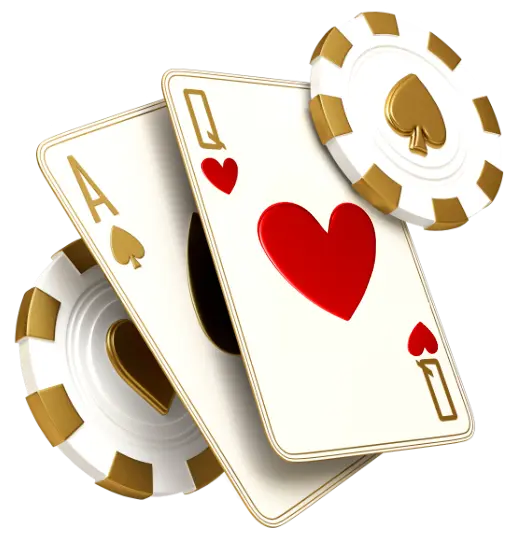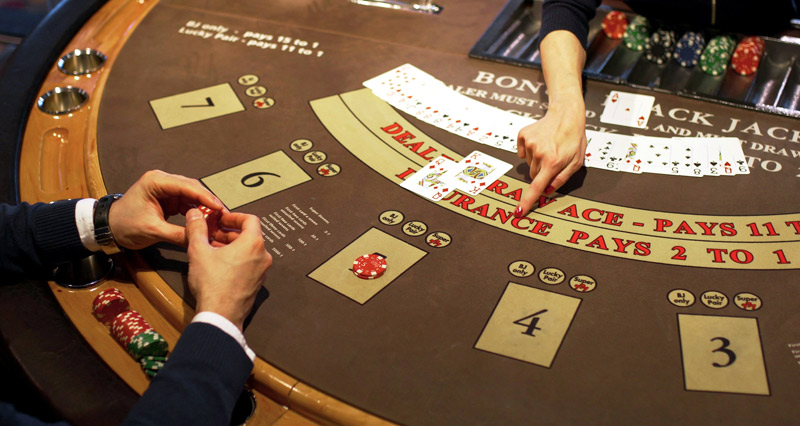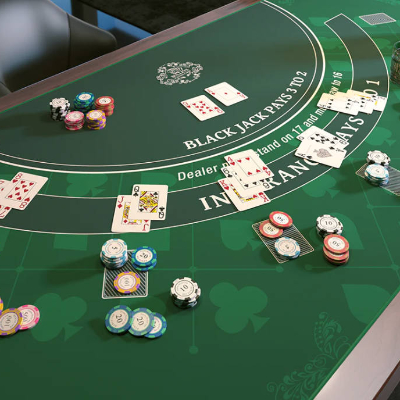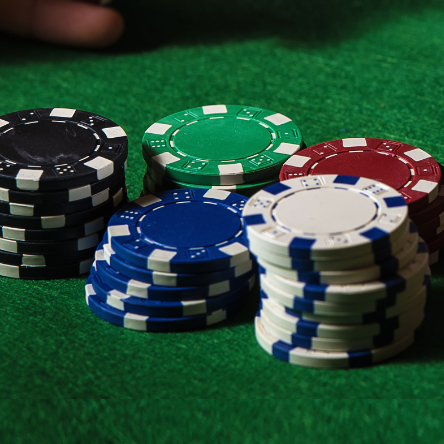Blackjack is one of the most popular table games. It's probably the most classic card game and the first casino game that many people learn to play. And as a skill based, strategic game, how well you know Blackjack rules will directly impact your odds.
Over the years, there have been tweaks and features added to the game to deliver new Blackjack versions that give the game a different dynamic. Since they are built on the same foundation, knowing basic blackjack rules well will help you tackle these other games with confidence.
Key things to master include knowing when you should double down or split, as well as what rules apply to the dealer. We'll also cover some of the typical blackjack side bets. It's easy enough to learn that even beginners can find themselves a place at the table in no time.
Table of Contents
- How to Play Blackjack - the Basics
- What are the Blackjack Card Values?
- Betting and Dealing the Cards
- Playing Blackjack - Different Actions Possible
- How Blackjack Winnings are Calculated
- Extra Features and Side Bets in Blackjack
- Blackjack Winning Probability and House Edge
- Blackjack Variants - Rules
- Blackjack Rules FAQ
How to Play Blackjack – the Basics
The aim in Blackjack is to have the cards in your hand add up to 21. Here is how to play Blackjack at the most basic level:
- At the beginning of the game, the player is dealt two cards by the dealer, who also gets two cards. In Classic Blackjack, one of the dealer's card will be face up.
- Take a look at your cards. If your two cards add up to 21, you have a Blackjack and you win. This means you would have an Ace and a 10 (or face) card.
- If your two cards don't give you a natural Blackjack, then you decide if you want to take another card. At this point, you want to get closer to 21 than the dealer, without going over 21. Going over 21 is called "going bust" and whoever goes bust first will lose the game and end the round.
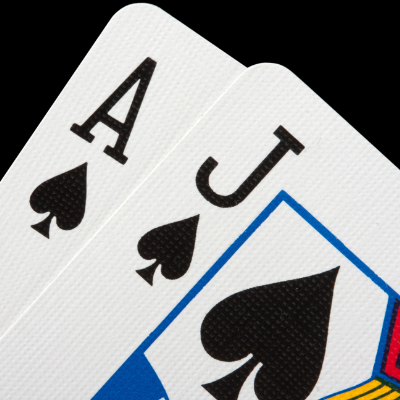

That's the rules to Classic Blackjack. Other variants usually differ in the rules for the dealer. The most common is whether the dealer must hit (take another card) or stand (not take more cards) on a 17, and what to do on a soft 17, which is when there is an Ace in the hand.


What are the Blackjack Card Values?
The nuts and bolts of Blackjack are of course the cards. The standard Blackjack deck has 52 cards, from 2 to Ace, with the colors and four suits, diamonds, hearts, spades and clubs. The jokers are removed. Classic Blackjack usually plays with 6 to 8 decks. Single deck blackjack games are also available.


Number cards, for example, 2 and 7, are counted as they are. Face cards, that is J, Q, and K, are counted as 10. Ace can be worth 1 or 11, depending on what works for your hand.
When the Ace can be either, it is called a Soft Hand. Usually it is in reference to a soft 17 – an Ace and a 5 can add up to 17, if you think of it the Ace as an 11. But it can also be 6, if you think of the Ace as 1. This gives you more room to take another hit.
Betting and Dealing the Cards
Typically, a blackjack table usually has space for six players, who sit in a semicircle. The dealer sits opposite. The game is always played against the dealer and never against the other players.
When you've taken a seat at the table, you can put your bet down in the betting square in front of you on the table. Each table has a pre-defined minimum and maximum stake and your bet has to fall within this range.
After everyone has placed their bets, the croupier will give each player one card, starting in a clockwise direction. After all the players get their first card, the dealer will draw one card and leave it face up in front of them. This is the up card.
Then the dealer deals a second round of cards to all players. At the end, the dealer also gets a second card, this time facing down. This is called the hole card.
Playing Blackjack – Different Actions Possible
Once everyone has two cards, this is when you will need to make some decisions. If there are multiple players at the table, it starts with the first player going clockwise around the table and ending with the dealer.
In Classic Blackjack, if the dealer has 17 or higher, they must "stand" – that is not take another card. If lower than 17, they must take a "hit" – that is take another card. Blackjack variants may have different rules for the dealer on what to do on a 17. This is usually written on the Blackjack table.
On the other hand, players have several options, and they can choose as they wish.
- Hit - Draw a card
- Stand - Not draw a card
- Split - Divide the 2 cards into 2 hands
- Double Down - Doubling your bet
- Surrender
- Insurance
Hit - Draw a card
A hit is when you decide to take another card. Whether you decide to do this depends on how high your current hand is, and the dealer's upcard. At land-based casinos, you would tap the table to tell the dealer you're going to hit. At online casinos, there's a button for each action that you just press.
Stand - Not draw a card
When your hand is close to 21, it may be wise to take a stand. Not only because you have a good chance at beating the dealer but also there's a good chance that you would go bust and lose if you take a hit. At a land-based casino, you would just wave your hand.
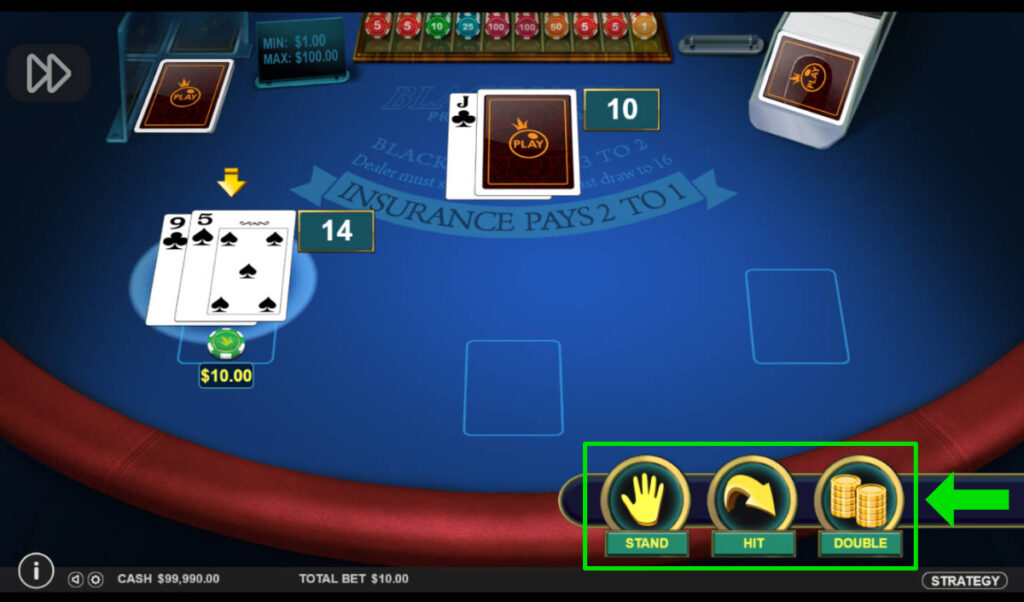

Split - Divide the 2 cards into 2 hands
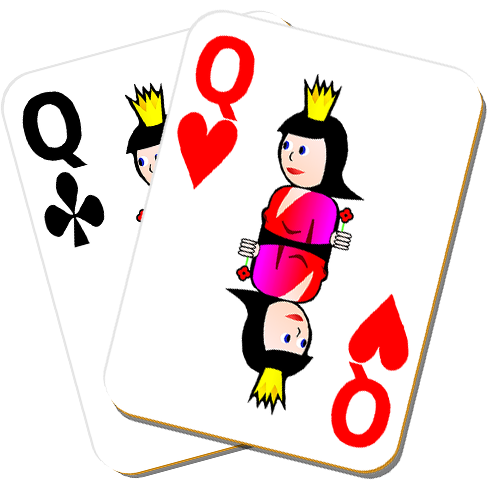

If your two cards are the same value, for example, two 8s, then you can split them into two separate hands. A second card will be dealt for each hand. A split requires that you place an additional bet.
If your two cards are both 10s or are the same Face card, we advise against splitting since you are already very close to 21.
Double Down - Doubling your bet
Doubling down is one of the most powerful moves in blackjack, and in almost every version of the game, players have the option to do it. We don't know of a single variant where it's outright banned. But the real question is when can you double down? That depends on the specific blackjack rules you're playing by.
Here's how it usually breaks down:
- When your first two cards total 9, 10, or 11.
- When your first two cards total 10 or 11.
- Anytime, as long as it's your first two cards.
- When your total is 9, 10, or 11, no matter how many cards it took to get there.
- When your total is 10 or 11, regardless of how many cards you have.
- Anytime, no matter how many cards you've drawn.
No matter the variation, one thing is always true: after you double down, you get exactly one more card. There are no exceptions. After that, your turn is over, and the game moves to your other hand if you have one, or to the next player, or the dealer.
Some blackjack games let you double down after a split, following the same rules as above. Others shut it down completely. It all depends on the rules of the specific game.


Surrender
There are Blackjack variants that let you surrender. You get half your bet back. Basically, this is an option when you feel that the dealer has a very strong hand and your odds aren't looking good. Usually, the surrender option is available only after the first two cards, but some games do offer a late surrender option.
Insurance


Insurance is half your initial stake. So if you bet $10, insurance will cost $5. If the dealer has a blackjack, your initial stake and insurance will be returned to you, so in this example the whole $15.
If the dealer doesn't have a blackjack, the game continues as usual. From here, whether you win or lose, you will not get your insurance back. This is why Blackjack insurance is generally not recommended.
How Blackjack Winnings are Calculated
When all the players have had their turn, the dealer then makes their move. The game rules dictate what the dealer must do under certain situations. In Classic Blackjack, if the dealer's hand is under 17, they must always keep drawing more cards. If their hand is 17 or higher, then they must stand. If they go over 21, they go bust and lose.
The dealer's hand will be compared to each player's. Because the game is played against the dealer, the dealer can win against one but lose to another player in the same round.
Blackjack Odds and Payout
- All winning bets in Blackjack are paid 1:1, so called even money, with the exception of a Blackjack.
- In the case of a Blackjack, payout 3:2. Some variants pay 6:5.
- If the dealer has a Blackjack, everyone loses and the round ends.
- If you and dealer have same value, it's a tie, which is called a "push". You get your bet back.
- If both of you bust, you still lose. If both of you have a Blackjack, it's a push.
Extra Features and Side Bets in Blackjack
Blackjack variants will have minor variations in the above rules. Most variations occur in the rules for the dealer. For example, some games force the dealer to hit on a 17, increasing the probability of the dealer going bust.
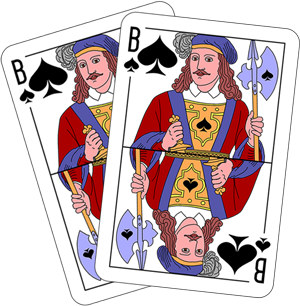

Side bets add to the excitement and to the winning potential. But the flip side of this is the potential for extra loss, as side bets cost extra to your basic bet in the game.
Blackjack Winning Probability and House Edge
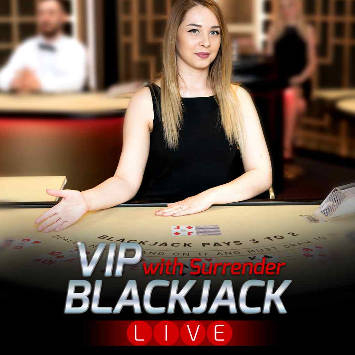

A Surrender variant of Ezugi
The house edge refers to the probability that the casino, or sometimes called the bank, will win. Blackjack is known to have the lowest house edge out of all casino games, although the exact edge depends on the variant. The differences in house edge are also reflected in winning payouts. For example, some Surrender games pay 4:3 instead of 3:2.


In the case of Atlantic City Blackjack, for example, the dealer must stand on 17. This decreases the house edge significantly, because while the dealer is less likely to go bust, it's also a low enough value for players to beat without going bust themselves.
Below is a list of the most popular Blackjack variants and their house edge.
| Variant | House edge (in percent) |
|---|---|
| Vegas Strip Blackjack | 0.34 |
| Atlantic City Blackjack | 0.35 |
| Vegas Downtown Blackjack | 0.38 |
| Spanish 21 | 0.38 |
| Bonus Blackjack | 0.39 |
| European Blackjack | 0.39 |
| Double Exposure Blackjack | 0.69 |
Blackjack Variants – Rules
Classic Blackjack is the foundation to other Blackjack variants, which each have their own specifications that can change the game's probabilities. Most of them however concern the dealer. The differences between Classic Blackjack, Spanish 21 and Atlantic City, for example, all have to do with rules for the dealers.
Normally, the dealer hits on values up to 16, and stand on 17. However, there are also games that require a dealer to hit on a 17, and increase the odds of the dealer going bust. It's also important to understand the difference between a hard 17 and a soft 17.
Hard 17: a combination of cards that add up to 17 but does not include an Ace Card. For example, an 8 and a 9.
Soft 17: is an Ace card plus a 6 card. It is "soft" because the Ace can be counted as 1 or 11.
Variants may specifically require the dealer to Hit or Stand on a Soft 17. When the dealer must hit on a soft 17, the house edge increases as they benefit from a chance to get closer to 21 without going bust.
Other variants might focus more on the player, such as when splitting and doubling down is allowed, which have a more direct correlation to payout.


Blackjack Rules FAQ
- Do Blackjack games have all the same rules?
- Is it hard to master Blackjack?
- Is it better to play Blackjack at a casino or online?
- What is the best Blackjack game to learn?
1. Do Blackjack games have all the same rules?
All Blackjack games follow this basic rule – that whoever gets a hand that adds up to 21 will win, and going above 21 results in a loss. However, some games have specific rules concerning what the dealer or the player may do under certain situations.
However, note that there can be exceptions even to the basic 21 rule. Some tables and games have the dealer push at 22 instead of going bust.
2. Is it hard to master Blackjack?
It somewhat depends on the individual, but we would say for a skill-based, strategy game, Blackjack is easy to learn and relatively easy to master. Once you understand the basic rules, you can start applying strategies systematically. At this point, practice can go a long way.
3. Is it better to play Blackjack at a casino or online?
This depends on preferences, but playing Blackjack online has several advantages. Other than whenever you want, wherever you want, you can also play for free in demo mode to practice. However, a traditional casino in Vegas or wherever still gives you an entirely different atmosphere. Some can even offer elegant dining options. And even though online gambling has more advantages, real life interactions just can't be replaced.
4. What is the best Blackjack game to learn?
For beginners, we recommend starting with Classic Blackjack. This will give you all the building blocks to master different strategies and to experiment with variants.
